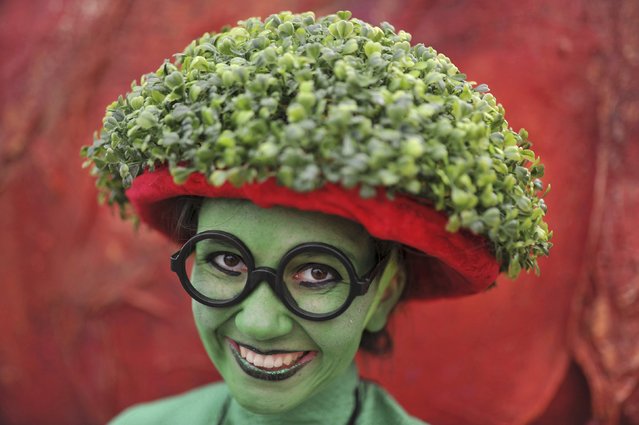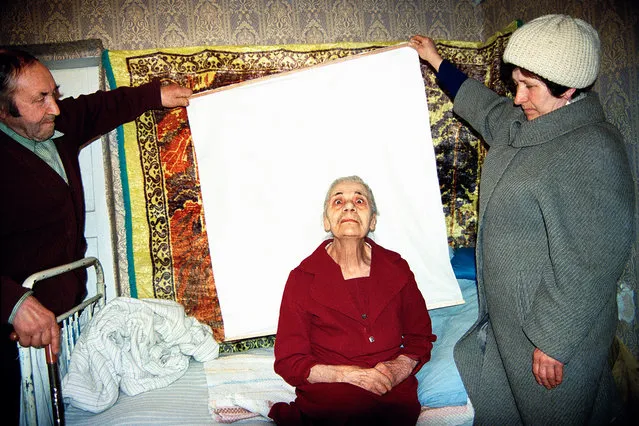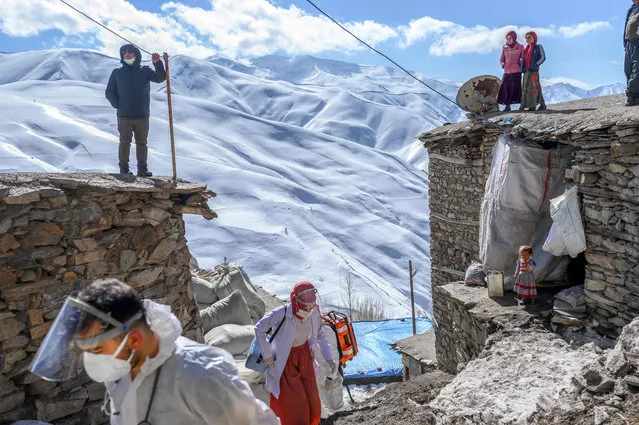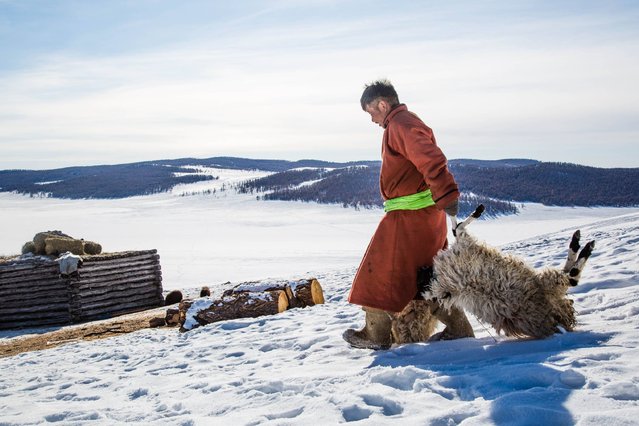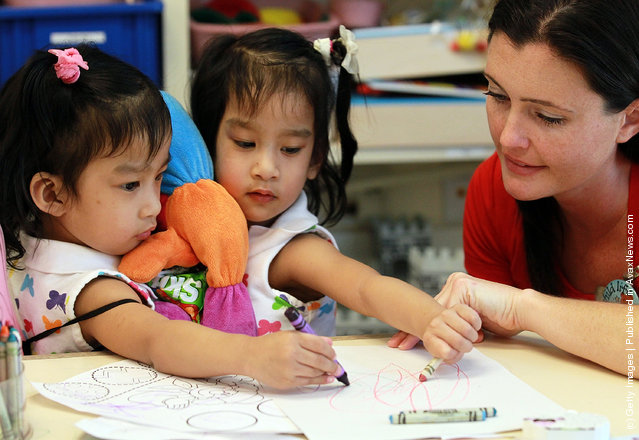
Conjoined twins Angelica (C) and Angelina Sabuco (L) play with child life specialist Allison Brooks during a press conference at the Lucile Packard Children's Hospital at Stanford on October 31, 2011 in Palo Alto, California. Two year-old conjoined twins Angelica and Angelina Subaco who are connected at the chest and abdomen are preparing for separation surgery by Dr. Gary Hartman. The surgery will last between 6 and 8 hours that is followed by three hours of reconstructive surgery for each girl. (Photo by Justin Sullivan/Getty Images)
01 Nov 2011 11:10:00,post received
0 comments

